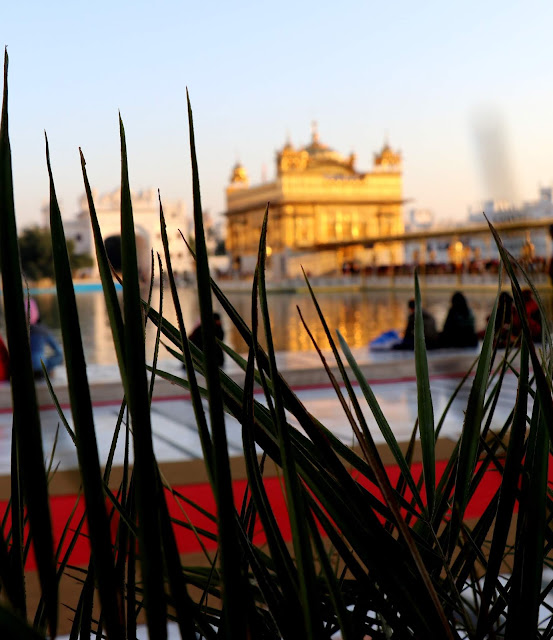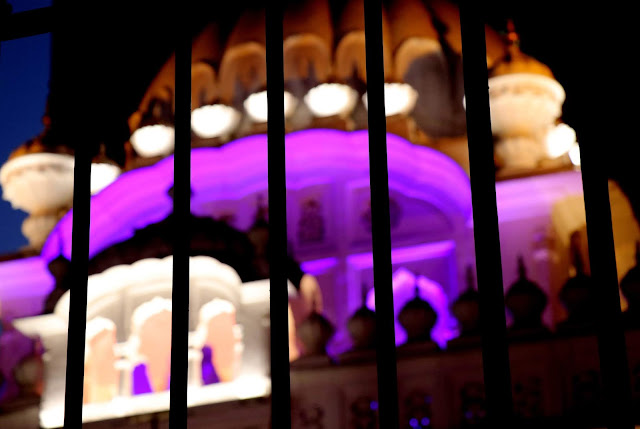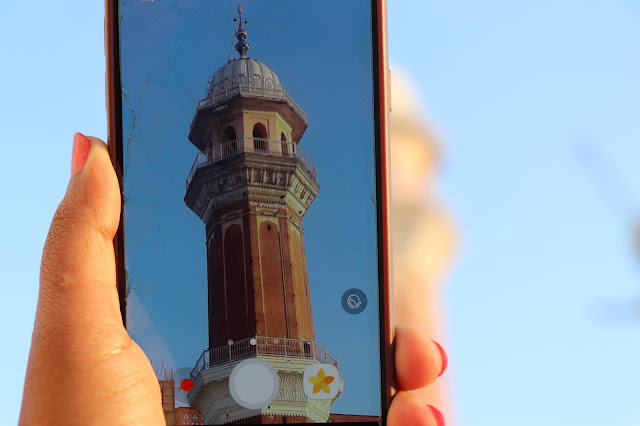Golden Temple in Amritsar (also known as Darbar Sahib,
Harmandir Sahib, or Harmandar Sahib) is a “sanctum precinct of Sikhs” that you
must visit in your lifetime. As a matter of fact, Sikhs believe that the Golden Temple is an empyrean
situated on the Earth. Furthermore, this place has an imperative not only in the perimeters of
Sikh religion but also in others. You can view 7 new unseen Golden Temple images on our
photography blog. Our only motive is to provide Golden Temple information
to you via our photography blog.
Golden Temple (Harmandir Sahib/Darbar Sahib)
 |
| Image of Golden Temple in Amritsar |
Golden Temple is one of the most significant places in the
Sikh religion. The vicinity of the Golden Temple has 4 entrances, a causeway
directly leading to Akal Takht, and a circumambulation way surrounding the
pool.
The message pass by this establishment is an open house for
all; anybody can come and worship here without any discrimination.
According to an estimation, in a day, over 100,000 devotees come
to pay their reverence.
Golden Temple History
 |
| Golden Temple in Amritsar, Punjab (India) |
According to the archives, this sacred place was preferred by 3rd Sikh Guru, Guru Amar Das Ji. The 4th Sikh Guru, Guru Ram Daas Ji, had initiated the process of building the holy building of the Golden Temple.
This was started with the assistance of a great Sikh
personality known as Baba Buddha Ji.
This city was started to flourish, and merchants and
artisans from various parts of India made this their new home.
The city was titled as “Amritsar”; the period of construction
of this holy place was from 1574 to 1589.
Upon completion of the place and city, Guru Arjan Dev Ji established
“Amritsar” as a foremost Sikh pilgrimage destination.
 |
| Golden Temple View |
Quick Fact about the Golden Temple
Golden Temple has been recommended
by UNESCO in the list of “UNESCO World Heritage Site”.
Akal Takht (Supreme Court of Sikhs)
 |
| Image of Sri Akal Takht Sahib, Amritsar, Punjab |
Akal Takht simply means the throne of the timeless one. The
6th Sikh Guru, Guru Hargobind Sahib Ji, asked wanted a different
court for Sikhs. At that time, Emperor Jahangir was on the throne in India and
did all the judicial works in his own court.
Guru Hargobind Sahib Ji saw the injustice happens in the
emperor’s kingdom and then decided to come up with a “justice throne”.
Built as
a symbol of political sovereignty, the aim to build this building was to
address the spiritual and temporal in one place.
So, the Akal Takht came into the existence on June 15, 1606;
it is one of the first among the 5 Akal Takhts.
Description of Akal Takht
In the annals of Sikh, the Akal Takht (supreme seats of
Sikhs) had a name as Akal Bunga. This is located exactly opposite to the
Harmandir Sahib connecting both of the buildings through a causeway.
The luminaries of Sikhs – Baba Buddha and Bhai Gurdas –
encouraged this revolutionary step. Guru Hargobind Sahib Ji wore two swords:
Piri (spiritual authority) & Miri (Temporal Authority) – to fight against
the oppression of Jahangir’s reign.
The Vitality of Akal Takht in Sikh History
 |
| Image of Akat Takht in Amritsar, Punjab |
To build the structure of Akal Takht, 3 Sikh personalities –
Guru Hargobind Sahib Ji, Bhai Gurdas Ji, and Baba Buddha Ji – came forward.
The structure was built in the following architectural form:
the height of the platform was raised to 12 feet. This was done with the
intention to pass on an intimation to the courtship of Emperor Jahangir.
During that time, there was an adage propagating that “only
an emperor can sit on the throne of more than 3 feet”. But Guru Ji certainly
defied this saying and established this place.
It had become a regime for the Guru Hargobind Sahib Ji to
sit on this dedicated platform to Sikhs and resolve all the disputes of the
community.
Ramgarhia Bunga
Sikh History has the number of important memorials, and “Ramgarhia
Bunga” holds the foremost position in it. It fulfilled the purpose of being a “watchtower”
during the reign of Mughals to safeguard the Golden Temple.
 |
| Image of Ramgarhia Bunga in Amritsar, Punjab |
These Bungas are situated in the holy perimeters of Golden
Temple, built by Jassa Singh Ramgarhia. Although these are constructed in the
18th century, it is a true example of Bunga architecture typology.
Before concluding our blog, we have gathered the number of
questions to answer.
Frequently Asked Questions on Golden Temple (Darbar Sahib)
Question 1: What are the other names of the Golden Temple?
Answer 1: Golden Temple is also called Darbar Sahib and
Harmandir Sahib.
Question 2: Who built the Golden Temple?
Answer 2: Harmandir Sahib was built by Guru Ram Das Ji (4th
Guru of Sikhs) in the year 1577.
Question 3: Who laid the foundation of the Golden Temple?
Answer 3: On the behest of Guru Arjan Dev Ji (5th
Guru of Sikhs), Sai Mia Mir Ji (a Muslim saint of Lahore) had laid the
foundation stone in the year 1589.
Question 4: How the Golden Temple name was coined?
Answer 4: During the reign of Maharaja Ranjit Singh (Sikh
ruler), an architect named “Desraj” was assigned work for the complete
blueprint of the Golden Temple. The Maharaja did the service to rebuild the
whole building in marble & copper in 1809. The gold was foiled onto the
monument in 1830.
Question 5: State the importance of 4 entrances of Golden
Temple in Amritsar.
Answer 5: The 4-door entrance comprises of a special message
that anybody can come here from any direction and pay your reverence here.
Question 6: Does the Golden Temple have the facility for the
meals (free kitchen/langar)?
Answer 6: Yes! You can have tasty meals from the “free
kitchen” aka “Guru Ka Langar”. The kitchen is opened 24x7 for the devotees who
have come to pay their respects.
 |
| Golden Temple Sarovar in Amritsar |
Our Words on Golden Temple in Amritsar
We would like you to recommend that you must visit the
Golden Temple in Amritsar. This will elevate your holistic vibes in your body
and soul.
Our objective through our photography blog is to show you wonderful
images of Golden Temple.